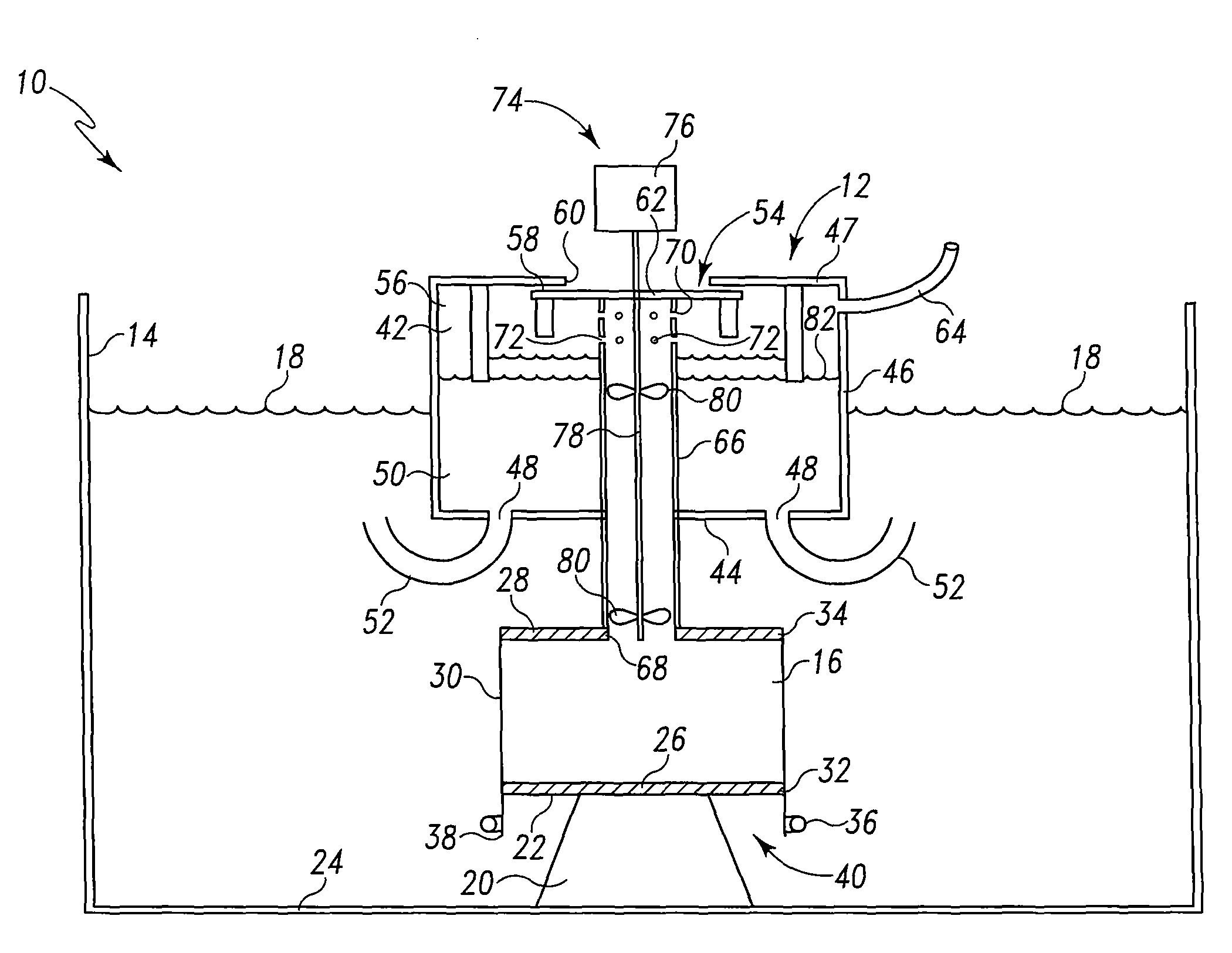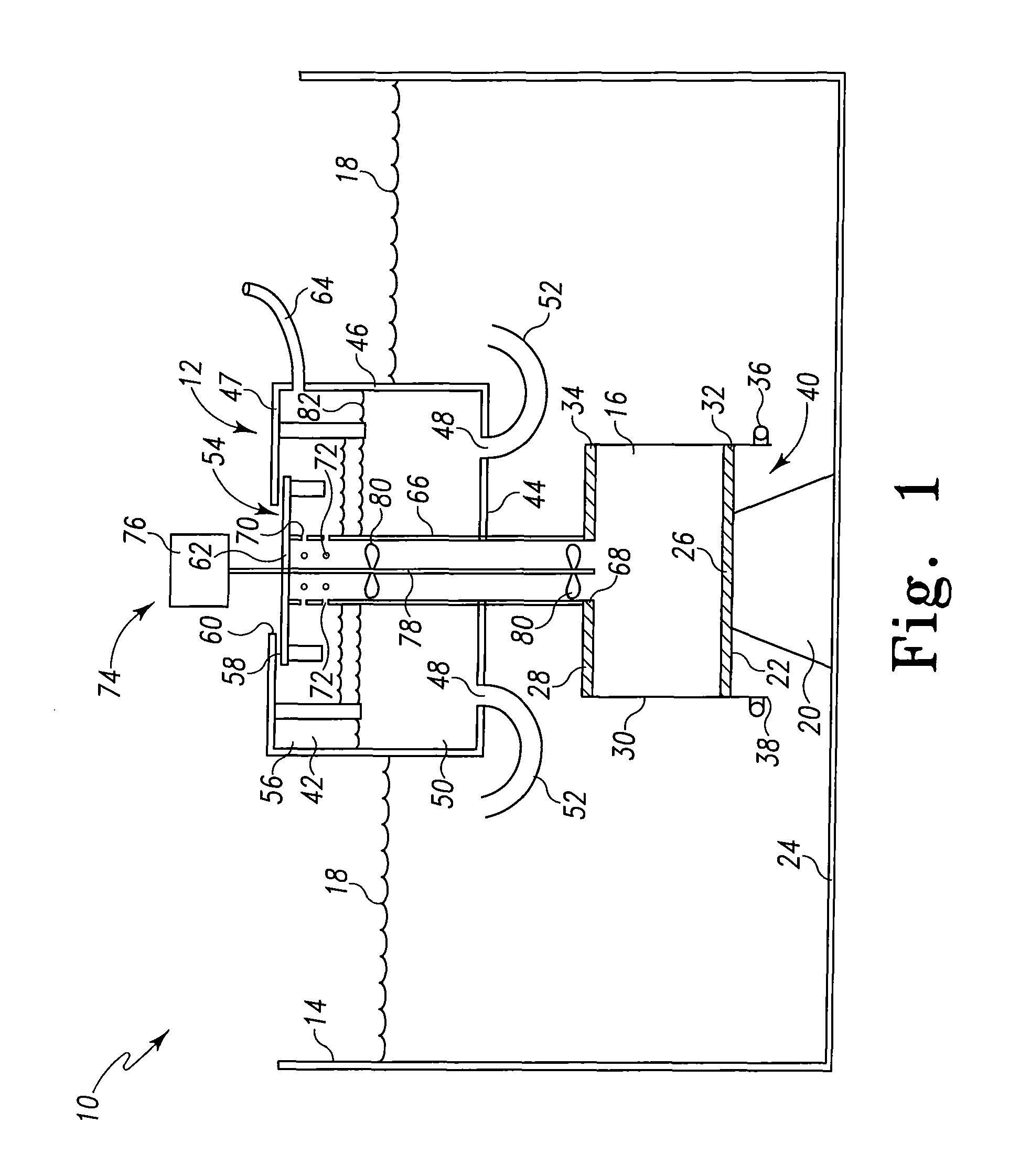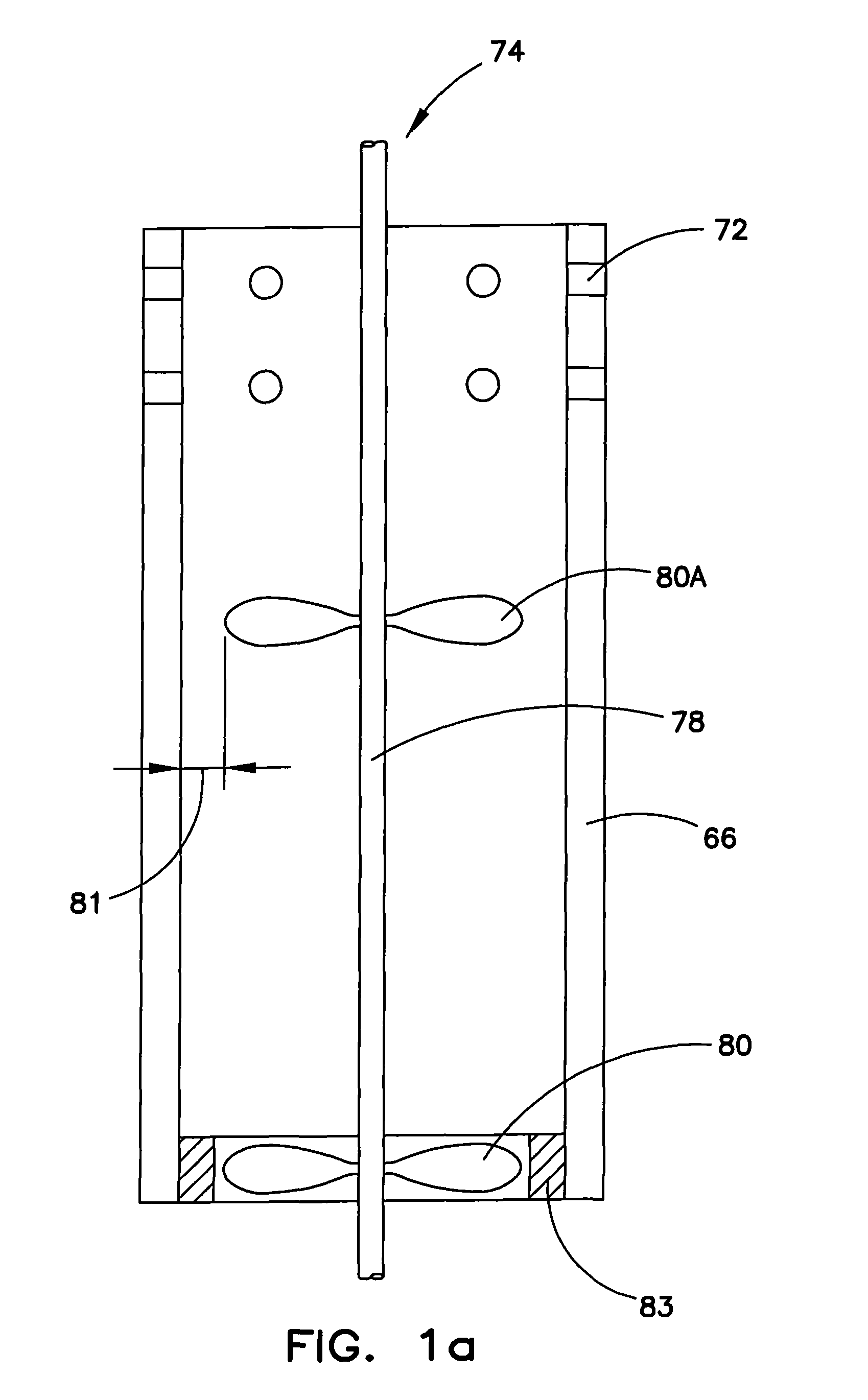Process and system for growing crustaceans and other fish
a technology for crustaceans and crustaceans, applied in the field of aquaculture systems, can solve the problems of fewer fish available, many of the traditional sources of fish, i.e. lakes, rivers, streams, etc., and the pollution of the public, so as to and reduce the relative proportion of floc. beneficial bacteria
- Summary
- Abstract
- Description
- Claims
- Application Information
AI Technical Summary
Benefits of technology
Problems solved by technology
Method used
Image
Examples
example 1
[0045]Water is added to an 18-foot diameter tank having 52-inch sidewalls to substantially fill the tank to about 5700-7700 gallons. The water temperature is heated and maintained at about 85° F. Sea salt is added to the water in the tank to increase the salinity to about 10 ppt. The water treatment unit is then activated to begin cycling and moving the water in a toroidal pattern. Generally, the water treatment unit is operated for a period of time sufficient to normalize the environment of the tank water before supplying the crustaceans or other fish. As described previously, the water treatment unit not only sufficiently aerates the tank water, e.g., 1.1 pounds of oxygen per hour, but also strips carbon dioxide and biological byproducts from the tank water and removes them from the system. To increase the growth rate of bacteria, a sufficient amount of ammonia, nitrites and / or nitrates may be added to the tank water. Samples of the tank water are taken to measure various aspects ...
PUM
| Property | Measurement | Unit |
|---|---|---|
| temperature | aaaaa | aaaaa |
| inner diameter | aaaaa | aaaaa |
| radial thickness | aaaaa | aaaaa |
Abstract
Description
Claims
Application Information
 Login to View More
Login to View More - R&D
- Intellectual Property
- Life Sciences
- Materials
- Tech Scout
- Unparalleled Data Quality
- Higher Quality Content
- 60% Fewer Hallucinations
Browse by: Latest US Patents, China's latest patents, Technical Efficacy Thesaurus, Application Domain, Technology Topic, Popular Technical Reports.
© 2025 PatSnap. All rights reserved.Legal|Privacy policy|Modern Slavery Act Transparency Statement|Sitemap|About US| Contact US: help@patsnap.com



